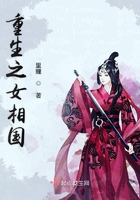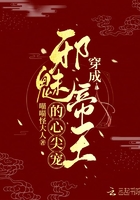If, however, the wish is to secure a horse adapted to parade and state processions, a high stepper and a showy[1] animal, these are qualities not to be found combined in every horse, but to begin with, the animal must have high spirit and a stalwart body. Not that, as some think, a horse with flexible legs will necessarily be able to rear his body. What we want is a horse with supple loins, and not supple only but short and strong (I do not mean the loins towards the tail, but by the belly the region between the ribs and thighs). That is the horse who will be able to plant his hind-legs well under the forearm. If while he is so planting his hind-quarters, he is pulled up with the bit, he lowers his hind-legs on his hocks[2] and raises the forepart of his body, so that any one in front of him will see the whole length of his belly to the sheath.[3] At the moment the horse does this, the rider should give him the rein, so that he may display the noblest feats which a horse can perform of his own free will, to the satisfaction of the spectators.
[1] {lampros}. Cf. Isae. xi. 41 ("On the estate of Hagnias"), Lys.
xix. 63 ("de Bon. Arist.").
[2] See Berenger, ii. 68.
[3] Lit. "testicles."
There are, indeed, other methods of teaching these arts.
[4] Some do so by touching the horse with a switch under the hocks, others employ an attendant to run alongside and strike the horse with a stick under the gaskins. For ourselves, however, far the best method of instruction,[5] as we keep repeating, is to let the horse feel that whatever he does in obedience to the rider's wishes will be followed by some rest and relaxation.
[4] Lit. "People, it must be admitted, claim to teach these arts in varous ways--some by . . . others by bidding . . ."[5] Reading {didaskalion}, al. {didaskalion}, "systems." Schneid. cf. Herod. v. 58.
To quote a dictum of Simon, what a horse does under compulsion he does blindly, and his performance is no more beautiful than would be that of a ballet-dancer taught by whip and goad. The performances of horse or man so treated would seem to be displays of clumsy gestures rather than of grace and beauty. What we need is that the horse should of his own accord exhibit his finest airs and paces at set signals.[6] Supposing, when he is in the riding-field,[7] you push him to a gallop until he is bathed in sweat, and when he begins to prance and show his airs to fine effect, you promptly dismount and take off the bit, you may rely upon it he will of his own accord another time break into the same prancing action. Such are the horses on which gods and heroes ride, as represented by the artist. The majesty of men themselves is best discovered in the graceful handling of such animals.[8] A horse so prancing is indeed a thing of beauty, a wonder and a marvel; riveting the gaze of all who see him, young alike and graybeards. They will never turn their backs, I venture to predict, or weary of their gazing so long as he continues to display his splendid action.
[6] Or, "by aids and signs," as we say.
[7] Or, "exercising-ground."
[8] Or, "and the man who knows how to manage such a creature gracefully himself at once appears magnificent."If the possessor of so rare a creature should find himself by chance in the position of a squadron leader or a general of cavalry, he must not confine his zeal to the development of his personal splendour, but should study all the more to make the troop or regiment a splendid spectacle. Supposing (in accordance with the high praise bestowed upon the type of animal)[9] the leader is mounted on a horse which with his high airs and frequent prancing makes but the slightest movement forward--obviously the rest of the troop must follow at a walking pace, and one may fairly ask where is the element of splendour in the spectacle? But now suppose that you, sir, being at the head of the procession, rouse your horse and take thelead at a pace neither too fast nor yet too slow, but in a way to bring out the best qualities in all the animals, their spirit, fire, grace of mien and bearing ripe for action--I say, if you take the lead of them in this style, the collective thud, the general neighing and the snorting of the horses will combine to render not only you at the head, but your whole company[10] down to the last man a thrilling spectacle.
[9] Reading as vulg. {os malista epainousi tous toioutous ippous, os}.
L. Dind. omits the words as a gloss.
[10] Reading {oi} (for {osoi}) {sumparepomenoi}. See Hartmann, "An. Xen. Nov." xiv. p. 343.
One word more. Supposing a man has shown some skill in purchasing his horses, and can rear them into strong and serviceable animals, supposing further he can handle them in the right way, not only in the training for war, but in exercises with a view to display, or lastly, in the stress of actual battle, what is there to prevent such a man from ****** every horse he owns of far more value in the end than when he bought it, with the further outlook that, unless some power higher than human interpose,[11] he will become the owner of a celebrated stable, and himself as celebrated for his skill in horsemanship.
[11] Or, "there is nothing, humanly speaking, to prevent such a man." For the phrase see "Mem." I. iii. 5; cf. "Cyrop." I. vi. 18; and for the advice, "Econ." iii. 9, 10.















